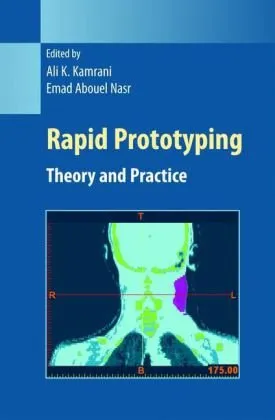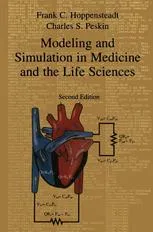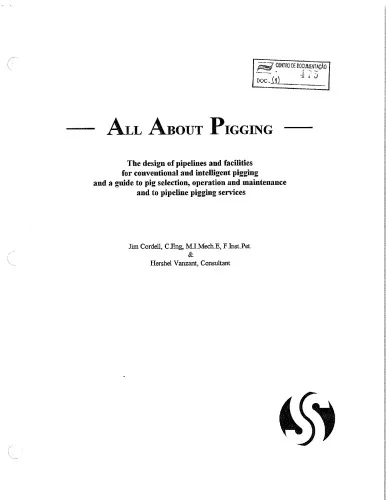Rapid Prototyping: Theory and Practice (Manufacturing Systems Engineering Series)
4.9
Reviews from our users

You Can Ask your questions from this book's AI after Login
Each download or ask from book AI costs 2 points. To earn more free points, please visit the Points Guide Page and complete some valuable actions.Related Refrences:
Introduction to "Rapid Prototyping: Theory and Practice"
"Rapid Prototyping: Theory and Practice" is an essential resource for students, researchers, and industry professionals involved in manufacturing, engineering, and design. Written by Ali Kamrani and Emad Abouel Nasr, this book stands out as a comprehensive guide to understanding the concepts, approaches, and applications of rapid prototyping (RP) technologies in modern manufacturing ecosystems. Combining theoretical frameworks with practical insights, the book provides a step-by-step explanation of RP systems and their transformative impact on product development cycles.
As manufacturing practices continue to evolve, the rise of advanced technologies has reshaped how products are designed, developed, and delivered. Rapid prototyping, a subset of these technologies, enables engineers and manufacturers to create physical models of designs in record time. This book meticulously covers these technologies, delves into their technical aspects, and evaluates their role in fostering efficiency, accuracy, and cost-effectiveness in diverse industries.
Whether you're a beginner exploring the world of RP or a seasoned expert, "Rapid Prototyping: Theory and Practice" offers an unparalleled blend of knowledge and insights to enrich your understanding of this pivotal field.
Detailed Summary
The book introduces readers to the world of rapid prototyping by emphasizing its theoretical underpinnings, practical applications, and integration into the manufacturing process. The authors meticulously explore the evolution of prototyping methods, from traditional practices to cutting-edge RP systems. A strong focus is placed on different RP technologies, such as Stereolithography (SLA), Selective Laser Sintering (SLS), Fused Deposition Modeling (FDM), and others, offering readers a clear understanding of the technological frameworks and operations behind these systems.
Chapters are dedicated to investigating how RP impacts product design and development, enabling faster iteration and innovation cycles. Through real-world examples and case studies, the authors illuminate how engineers and manufacturers leverage RP technologies to reduce development time, improve product quality, and bring ideas to fruition in ways unimaginable in earlier eras.
Further, the book discusses rapid tooling and manufacturing, providing insights into how RP is transcending its prototyping roots to reinvent the production landscape altogether. Readers will also find detailed discussions of material science, process parameters, CAD/CAM integration, and future trends in RP.
Key Takeaways
- In-depth understanding of various rapid prototyping technologies and their unique strengths.
- Insights into how RP contributes to faster, more efficient product development processes.
- Knowledge of materials and their applications in rapid prototyping and manufacturing systems.
- Practical guidance on combining RP techniques with CAD, CAM, and other digital design tools.
- A visionary outlook on the future of rapid manufacturing and its role in Industry 4.0.
Famous Quotes from the Book
"Rapid prototyping is not just a tool; it is a paradigm shift in how we conceptualize, design, and manufacture products in an increasingly competitive world."
"The power of rapid prototyping lies not only in creating prototypes but also in unlocking the creativity of engineers and the potential of the manufacturing process."
Why This Book Matters
"Rapid Prototyping: Theory and Practice" serves as a cornerstone for understanding and adopting RP technologies effectively. In a world where speed, precision, and innovation are the new imperatives, this book empowers engineers, researchers, and industry leaders to reimagine their product development strategies.
The book matters not only because of its depth of knowledge but also because it bridges the gap between theory and practice. Through its easy-to-follow structure, technical expertise, and real-world applications, it equips readers with actionable insights to integrate rapid prototyping into their workflows. By addressing both current practices and future possibilities, the book remains relevant in today's fast-paced manufacturing environments.
Free Direct Download
You Can Download this book after Login
Accessing books through legal platforms and public libraries not only supports the rights of authors and publishers but also contributes to the sustainability of reading culture. Before downloading, please take a moment to consider these options.
Find this book on other platforms:
WorldCat helps you find books in libraries worldwide.
See ratings, reviews, and discussions on Goodreads.
Find and buy rare or used books on AbeBooks.
1410
بازدید4.9
امتیاز0
نظر98%
رضایتReviews:
4.9
Based on 0 users review
Questions & Answers
Ask questions about this book or help others by answering
No questions yet. Be the first to ask!













